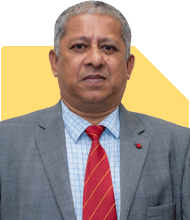Hello Gurus,
I am 29 yr old male having salary of 1.6 lakhs/month. I have 3+ lakh of corpus in equity. I want financial independence by the age of 45. How should I plan?
Ans: Achieving financial independence by 45 is a commendable goal. At 29, you have a strong foundation to work with. Your salary of Rs. 1.6 lakhs per month and Rs. 3+ lakh equity corpus are good starting points. Let's assess and plan how you can achieve financial independence by 45.
Assessing Your Current Financial Situation
Before diving into the investment strategy, it's essential to understand your current financial position:
You are 29 years old with a stable monthly income of Rs. 1.6 lakhs.
You have an existing corpus of over Rs. 3 lakhs in equity.
Your goal is to achieve financial independence in 16 years.
Understanding these key aspects helps in structuring a robust plan.
Prioritising Financial Independence
Financial independence means having enough wealth to live off passive income without relying on your job. We will focus on accumulating a substantial corpus that generates sufficient passive income by the time you turn 45.
Investment Strategy for Long-Term Wealth Creation
1. Diversified Equity Mutual Funds
Investing in diversified equity mutual funds is crucial for long-term wealth creation. These funds offer higher returns, which are necessary to outpace inflation and build a substantial corpus. Allocate a significant portion of your monthly savings to actively managed equity mutual funds. These funds, chosen with the help of a Certified Financial Planner, can provide better returns compared to index funds.
2. Regular vs. Direct Mutual Funds
Investing in regular mutual funds through a Certified Financial Planner has its advantages. While direct funds may have lower expense ratios, regular funds offer professional guidance. This ensures that your investments are well-managed and aligned with your financial goals. The value of advice often outweighs the marginal cost difference.
3. Systematic Investment Plans (SIPs)
Start or continue investing in SIPs with a focus on long-term growth. SIPs help in rupee cost averaging and reduce the impact of market volatility. By investing a fixed amount monthly, you build wealth steadily over time. Make sure to review and adjust your SIPs annually based on your progress and market conditions.
4. Diversification Beyond Equity
While equity is essential for growth, diversifying into other asset classes is also important. Consider allocating a portion of your investments into debt funds, gold funds, and PPF. This diversification balances risk and ensures steady returns. Each asset class behaves differently, and this mix will protect your portfolio against market downturns.
Building an Emergency Fund
An emergency fund is a safety net that protects your financial plan. Set aside funds that cover at least six months of living expenses. This fund should be liquid and easily accessible, like in a savings account or liquid mutual fund. Having this buffer ensures that you don’t have to dip into your investment corpus during unexpected situations.
Maximising Tax Efficiency
1. Tax-Saving Investments
Utilise tax-saving options under Section 80C, 80D, and 80CCD. Investments like PPF, ELSS, and NPS not only reduce your tax liability but also contribute to your long-term goals. Be mindful of the lock-in periods and liquidity of these investments to ensure they align with your overall financial plan.
2. Strategic Asset Allocation
Strategic asset allocation can optimise tax efficiency. By balancing your portfolio across different investment vehicles, you can minimise tax on returns. For example, long-term capital gains in equity are taxed differently from debt. Work with a Certified Financial Planner to ensure your portfolio is tax-efficient.
Risk Management
1. Insurance
Adequate insurance is a critical component of financial planning. Ensure you have sufficient life and health insurance coverage. Life insurance should cover at least 10-15 times your annual income. Health insurance should provide comprehensive coverage, considering your age and health status.
2. Avoiding Over-Reliance on Equities
While equities are essential for growth, over-reliance can be risky. Ensure your portfolio is well-diversified to include debt and other low-risk investments. This protects your wealth during market downturns and ensures stable returns.
Regular Monitoring and Review
1. Annual Review
Your investment strategy should be reviewed annually. Evaluate the performance of your portfolio, adjust SIP amounts, and rebalance asset allocation if needed. This keeps your investments aligned with your goal of financial independence by 45.
2. Adjusting for Life Changes
Life changes like marriage, children, or job changes can impact your financial goals. Reassess your financial plan whenever there’s a significant change in your life. Adjust your investment strategy to ensure that your plan remains on track.
Planning for Retirement
Even though your primary goal is financial independence by 45, it's essential to consider retirement planning. Ensuring a comfortable retirement involves planning for a longer horizon beyond 45. By focusing on both goals simultaneously, you create a more robust financial plan.
1. NPS and PPF Contributions
Consider contributing to the National Pension System (NPS) and Public Provident Fund (PPF). These long-term, government-backed schemes provide stability and tax benefits. While they offer lower returns compared to equities, they add a layer of security to your retirement planning.
2. Debt and Fixed Income Investments
In the years leading up to 45, gradually increase your allocation to debt and fixed-income investments. This reduces the volatility of your portfolio and secures the wealth you've accumulated. Debt investments like bonds, fixed deposits, and debt mutual funds offer stable, predictable returns.
Building Passive Income through Systematic Withdrawal Plans (SWP)
Creating a reliable passive income stream is essential for achieving financial independence, especially when planning to retire early or supplementing your income post-retirement. A Systematic Withdrawal Plan (SWP) can be a smart way to generate regular income from your investments while maintaining the growth potential of your corpus.
What is a Systematic Withdrawal Plan (SWP)?
An SWP allows you to withdraw a fixed amount of money from your mutual fund investments at regular intervals, such as monthly, quarterly, or annually. This strategy provides a steady income stream while your remaining investment continues to grow. It’s an effective way to convert your lump-sum investment into a consistent cash flow.
Advantages of Using SWP for Passive Income
1. Regular Income with Flexibility
SWP provides a predictable and regular income, which can be adjusted according to your needs. Whether you want monthly, quarterly, or annual payouts, SWP offers flexibility in setting the withdrawal amount and frequency.
2. Tax Efficiency
SWP is more tax-efficient compared to traditional fixed income options like fixed deposits. The withdrawals are considered a combination of capital and gains, which can result in lower tax liability, especially if you fall into a higher tax bracket.
3. Capital Appreciation
Even as you withdraw regularly, the remaining investment in your mutual fund continues to grow. This allows you to enjoy the benefits of capital appreciation while simultaneously receiving an income.
4. Control Over Your Investments
SWP allows you to retain control over your investments, unlike annuities where your capital is locked in. You can adjust your withdrawal amount or stop it altogether if your financial situation changes.
Implementing SWP for Passive Income
1. Choose the Right Mutual Fund
For SWP, it’s crucial to choose a mutual fund that aligns with your risk appetite and income needs. Generally, balanced funds, equity funds, or debt funds with a moderate to low-risk profile are preferred. These funds offer a mix of growth and stability, ensuring that your corpus is not significantly eroded over time.
2. Determine the Withdrawal Amount
Calculate the monthly or quarterly withdrawal amount based on your income needs and the size of your corpus. A common strategy is to withdraw 4-6% annually, which allows your corpus to last longer while still providing a steady income.
3. Start SWP After Building a Substantial Corpus
Before starting an SWP, ensure that you have accumulated a substantial corpus in your mutual fund. This ensures that the withdrawals will not significantly impact the growth of your investment, allowing you to enjoy a longer-lasting income stream.
4. Monitor and Adjust
Regularly monitor the performance of your mutual fund and the effectiveness of your SWP. If the market conditions change or your income needs increase, consider adjusting the withdrawal amount or frequency.
Considerations When Using SWP for Passive Income
1. Impact on Principal
While SWP provides a steady income, it’s essential to understand that regular withdrawals can reduce your principal over time, especially during market downturns. To mitigate this, choose funds with a good track record of consistent returns and avoid aggressive withdrawal amounts.
2. Market Risks
Since SWP relies on mutual fund investments, it’s subject to market risks. In volatile markets, the value of your remaining investment may fluctuate, impacting the sustainability of your withdrawals. Diversifying your investments across different asset classes can help manage this risk.
3. Inflation Protection
Ensure that the funds you choose for SWP have the potential to provide returns that outpace inflation. Over time, inflation can erode the purchasing power of your withdrawals, so selecting funds with growth potential is critical.
Using SWP Alongside Other Strategies
1. Combining SWP with Dividend Income
If you have investments in dividend-yielding funds or stocks, you can combine the income from SWP with dividend payouts. This creates multiple income streams, providing more stability and flexibility in your financial plan.
2. Integrating SWP with PPF and NPS Withdrawals
As you approach retirement or financial independence, you may also have other savings like PPF or NPS. These can be used strategically alongside SWP to ensure a well-rounded income plan. For instance, you can use the SWP for your monthly expenses while keeping your PPF and NPS as long-term growth vehicles.
Final Insights
An SWP is a powerful tool for generating passive income, especially if you aim to achieve financial independence or require a steady income stream in retirement. By carefully selecting your mutual funds, determining a sustainable withdrawal rate, and regularly reviewing your plan, you can create a reliable and tax-efficient income source.
Remember, the key to a successful SWP strategy lies in the balance—ensuring that you withdraw enough to meet your needs without eroding your principal too quickly. With thoughtful planning and disciplined execution, SWP can be a cornerstone of your financial independence plan.
Best Regards,
K. Ramalingam, MBA, CFP,
Chief Financial Planner,
www.holisticinvestment.in























